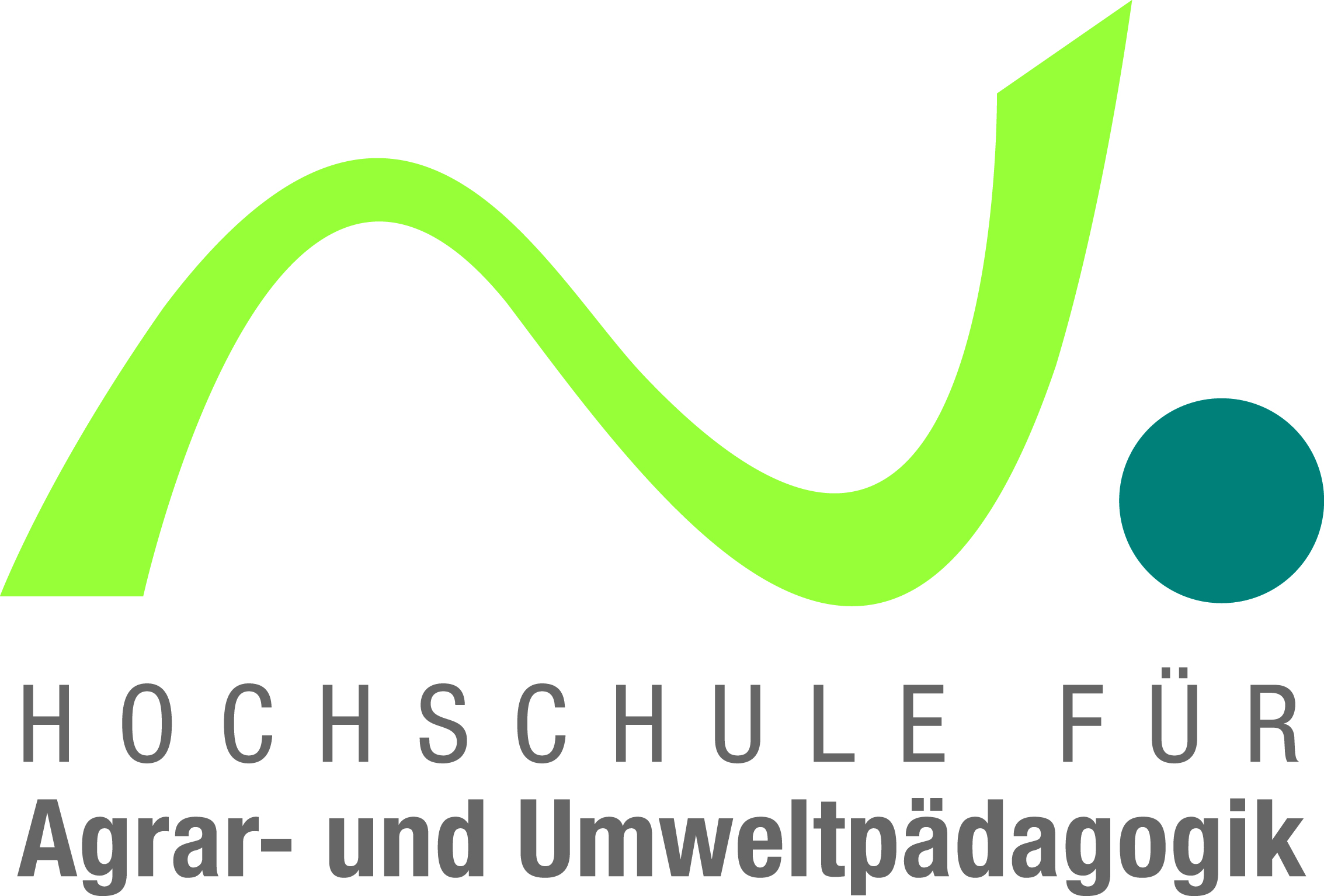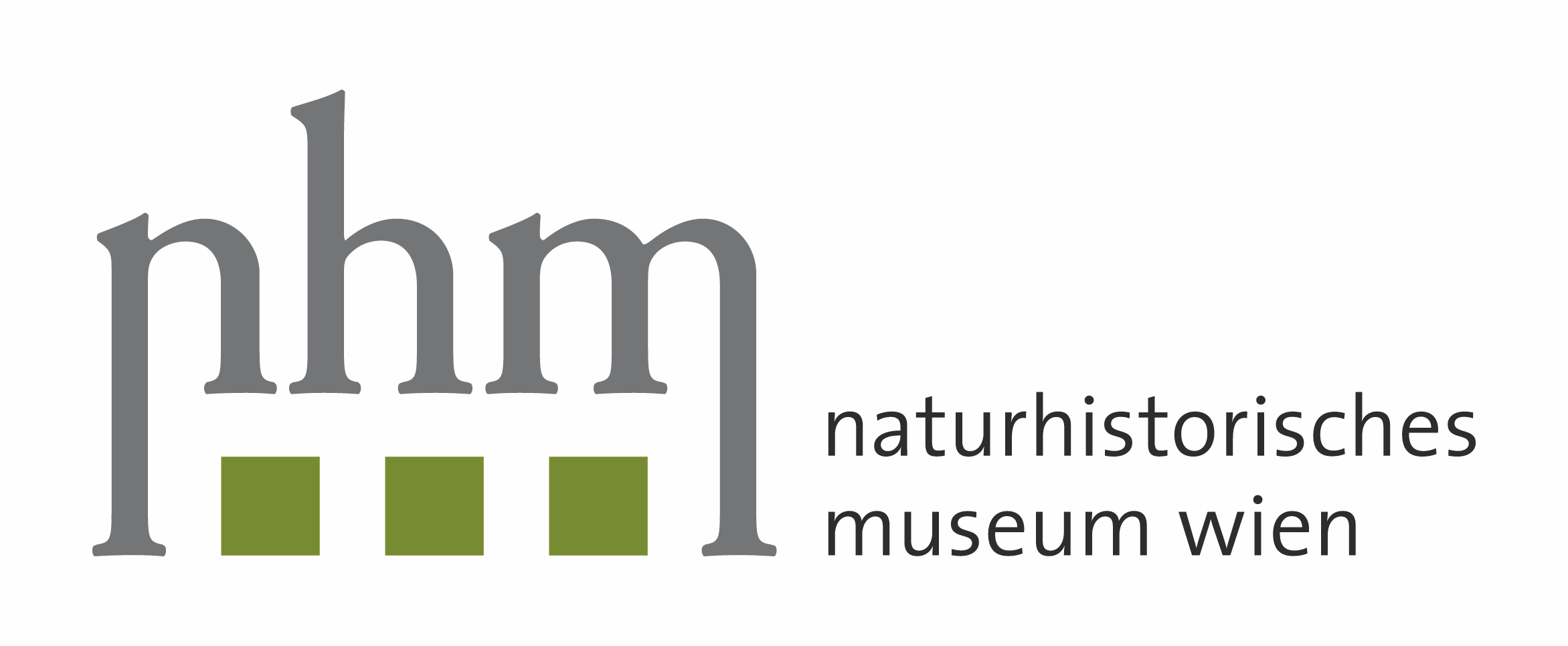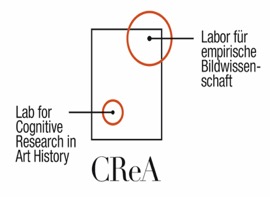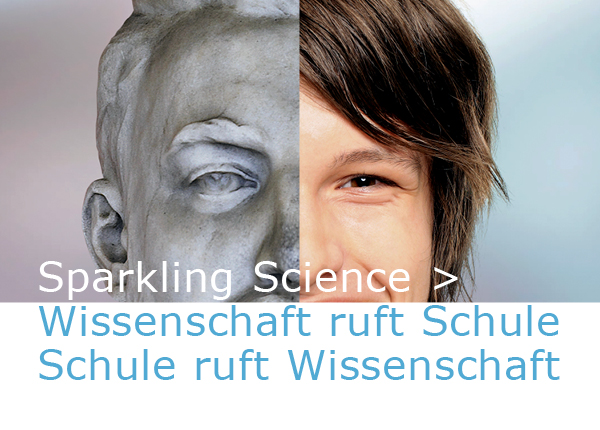Kremser scorpion
Participatory exploration of the "Kremser scorpion” (Euscorpius tergestinus) with school students
"Triestino scorpion" (Euscorpius tergestinus - still listed as E. carpathicus in the Red List of NÖ), which are threatened with extinction in Lower Austria, exists as an archaeozoon in Krems. This population is an isolated north-eastern outpost of the distribution area. Since 2019, sightings of these animals have been collected together with students of the BRG Krems Ringstraße 33, a UNESCO school, with the participation of the population. The students' questions to the population not only lead to reports of findings, but also to many stories that are linked to the encounters with the animals. The participatory approach not only collects data on the distribution of the animals, but also sketches a picture of people's attitudes towards them.
The first results have already been published: The good news: it still exists, the "Kremser Scorpion"! A population exists in a small area in the city. The research results have been published online in the journal "Biodiversity and Conservation Biology in Eastern Austria (BCBEA)". As throughout the project, the project team shared the work and all team members contributed to the article. This article is an example of how citizen science with lay people and closely participatory with motivated students can create local knowledge around a conservation object. In the course of the project, further questions have emerged that will continue to occupy a new generation of pupils in possible follow-up projects.
In this respect, we are still grateful for ongoing sightings, reports and stories!
Citizen Science Seminar
In 2022, poject coordinator Martin Scheuch held a lecture about the Kremser scorpion as part of the lecture series "Citizen Science Seminar" at the University of Natural Resources and Life Sciences Vienna (BOKU): "The Scorpion of Krems - Success with School & Citizen Science" (in German).
Project partners
 |  |  |
This project fulfils version 1.1 of the quality criteria for citizen science projects on Österreich forscht.
Topotheque
The growing flood of images cannot be processed by institutions alone. Partnership with citizen scientists is vital. Topotheque is a digital archive and network in which this historical legacy can be gathered. For the locally resident Topotheque users, every new image and new piece of information means a valuable building block with which they can document their regional history in more detail. Enthusiasm for the work with the Topotheques creates local archives that captures an interest that goes far beyond regional interest. This includes prop managers and costume designers on period films and scientists who can retrace the spread of a cattle breed in the 1930s. People have very often discovered a photo of a great-grandfather in the photos that were provided by a previously unknown person.
Realisation
The Topotheque is run by a municipality or an association. Volunteers and digital archivists at the Topotheque work on behalf of the municipality as links with the general public. Running a Topotheque is easy and the entry field on the administration user interface meets the international archive standard. Before the update was started, the Topotheque volunteers were introduced to the system in a two-hour training course using ICARUS. A Topotheque is usually opened at a locally organised event in which interested members of the public are presented with the Topotheque as a digital option to gather contemporary documents. Local museums and municipal archives often benefit from the Topotheque, as they can be sent originals. Similarly, memory institutions can take advantage of the Topotheque as a platform for their own inventories.
Dialogue counts
The Topotheque creates new groups of users. A Topotheque can not only answer questions about the history of a castle complex, but also provide quick information on the questions “What did the inn look like in the 1960s?” or “Are there photos of old innkeepers?”. Questions asked offhand, which often refer to details, can be answered. These questions are asked by a new and often younger userbase. To get in touch, you can ask the Topotheque a question, which can be answered directly through the website. This is because dialogue is the heart and soul of the Topotheque.
Expansion
The Topotheque was developed in an office in Wiener Neustadt. Based on the first “Prater” Topotheque as an example, municipalities in Lower Austria were the first to make private material about the community history available with the help of volunteers. The Topotheque was also well received in Upper Austria and implemented in a regional project as part of LEADER. The LEADER regions Weinviertel-Ost, Weinviertel Donauraum, Traunviertler Alpenvorland and Eferdingerland as well as other regions are using topotheques or preparing to use the Topothek. With Carinthia, where the Topothek was launched as a provincial project, the Topotheque is now being joined by a new province. In the “co:op” EU project, the topic of which is communication work in the archive, the Topotheque was established in seven other countries. Through the international archive platform ICARUS, the Lower Austria state archive joined as a scientific partner.
https://www.citizen-science.at/en/about/tag/history?start=10#sigProId0a0fa5221b
This project fulfils version 1.1 of the quality criteria for citizen science projects on Österreich forscht.
GenTeam
The European genealogy database
"Connecting genealogists"
GenTeam is a European platform of genealogical databases. Both scientists and amateur genealogists can make their data available here for free for other researchers. The cooperation of collaborators from many different countries has made it possible to compile databases that one researcher could not typically manage alone due to the volume. Our focus is currently on the indexing of ecclesiastical sources from Lower Austria, on a baptismal and death index of Vienna, as well as on an overall index of Austria-Hungary's casualty lists from the First World War. The baptismal index of Vienna between 1784 and 1900 alone will probably comprise about 4 million data records, of which more than 3,000,000 have already been recorded. They will in turn become the basis for scientific research. Of the approximately 3 million data of the loss lists, more than 2 million have already been recorded.
The more than 64,000 registered users currently have more than 21 million records available. These users come from a variety of countries from around the world. They are primarily genealogists, although there are also scientists, historians and biographers who increasingly make use of this resource. GenTeam is free and there is no membership fee.
All voluntary membership is more than welcome!
Project coordinator Felix Gundacker made the platform available with GenTeam (and also promoted its potential), while researchers and research groups have the option to provide data and forward these lists to coordinators (sometimes after prior query/consultation). To conclude, the coordinator ensures that all data is put online.
“Soon, everyone who visits the GenTeam site will ask themselves how they got by without this fantastic source!”
Dr Peter Braunwarth, 2011
https://www.citizen-science.at/en/about/tag/history?start=10#sigProId6d08090a96
This project fulfils version 1.1 of the quality criteria for citizen science projects on Österreich forscht.
Faces of migration
This project ran from 01.07.2017 to 31.12.2019. You can download a thematic booklet created in the process at the bottom of this page. In addition, print copies can now be made available to school classes free of charge (while stocks last). Please contact the project leaders if you would like to use them for teaching.
Faces of migration. Youth from Tyrol collaborated to research their family histories of migration
Studies in social history have documented time and again that migration has always been part of the human existence. If migration movements are as old as human history itself, world history can be read as a story of mobility. In today's world, international references have become part of day-to-day life – whether we are shopping, eating in a restaurant, watching television, at the cinema, maintaining a certain lifestyle or taking political action. These everyday situations in which we find ourselves and in which we act build our biographies and our familial references. They are also involved in many ways in events that cannot exclusively be defined locally, even if they manifest in a locally specific manner.
It is with this in mind that, together with their (grand)parents, teachers and friends, youth from Tyrol researched their family histories of migration and searched for traces of mobility in their neighbourhoods. They also gained broad support from universities and civil society. The project’s active network, which is based at the Institute for Educational Science in the Migration and Education learning and research field, includes:
- Research Centre for Migration and Globalisation, University of Innsbruck
- Office of Tyrol Regional Government, Dept. Society and Labour – Integration
- Künstlerhaus Büchsenhausen
- Tirolean State Museum
- Center for Migrants in Tyrol (ZeMit)
It also included citizens from the Innsbruck/Pradl and Fulpmes Tirolean research areas, who wrote reports on the history of migration in their areas or provided documents that were relevant to the project (e.g. artefacts of migration).
Investigating stories of migration in your own family
Why not take a look into your own family history? You can refer to family migration experience if, for example, an uncle emigrated to Canada for professional reasons or if your grandparents moved to Tyrol from the capital city through internal migration. Our regions of experience cover the entire world. In this way, multiple affiliations are possible and there are a variety of examples of this from multi-home day-to-day life:
A pupil from Tyrol meets her best friend over Skype and regional borders. Every week, a university assistant commutes between his home and work. During the week, he works in Vienna and at the weekend, he spends time with his family in Innsbruck. It is a long car journey from Tyrol to Serbia, especially when the children are excited about Gran’s baklava. One teenager is immersed in several languages a day: he speaks German with his sister, Kurdish with his mother and a regional dialect with his best friend.
In this research project, young people are experts in their life experience and actively shaped the entire research process: they developed their own research questions, which they then answered with the help of open interviews with parents and relatives. Furthermore, the young people used ethnographic field research to search for traces of migration in their immediate area and district.
What do family migration stories mean to me?
From a scientific perspective, it was then asked how migration is perceived and evaluated in individual families and whether there is a knowledge or awareness of migration. The artefacts of migration, and other items, brought into project lessons and schools helped with this.
Based on the knowledge obtained on family and location-specific histories of migration, the young people organised a final event in Innsbruck. The research results were also entered into an online notebook, which was largely aimed at schools and the general public. On the one hand, this project made a significant contribution to researching family stories of migration and the city. On the other hand, the findings from the project should serve to create another form of awareness of migration and diversity in your location.
Image gallery
(Click on an image to enlarge)
https://www.citizen-science.at/en/about/tag/history?start=10#sigProIdc7572d3be1
Project manager:
Prof. Dr. Erol Yildiz und Ass.-Prof. Dr. Marc Hill (Forschungs-Bildungs-Kooperationen), both Universität Innsbruck, Institut für Erziehungswissenschaft/Migration und Bildung
Contact: This email address is being protected from spambots. You need JavaScript enabled to view it.; This email address is being protected from spambots. You need JavaScript enabled to view it.
Scientific project staff: Mag. Miriam Hill, Anita Rotter MA
Student assistant: Alexander Böttcher, BA
Scientific cooperation partner:
Universität Innsbruck, Forschungszentrum Migration und Globalisierung
Partners from civil society, art, culture and politics
- Amt der Tiroler Landesregierung, Abt. Gesellschaft und Arbeit – Integration
- Künstlerhaus Büchsenhausen
- Tiroler Volkskunstmuseum
- ZeMit
Participating schools:
- NMS Vorderes Stubai, Fulpmes (Direktion: OSR Josef Wetzinger)
- UNESCO NMS Gabelsberger, Pradl/Innsbruck (Direktion: Brigitte Winkler-Greimel, MEd BEd)
Project duration:
1 July 2017 – 31 May 2019
Sponsor:
Sparkling Science/BMBWF
Project presentation
This project fulfilled version 1.1 of the quality criteria for citizen science projects on Österreich forscht.
City-Country-Child
An Intergenerational Ethnography on Rural Images of Longing
Taking the unique photography collection of the Austrian Museum of Folk Life and Folk Art as its starting point, the research project “Stadt-Land-Kind” (City-Country-Child) investigated the myth of a “better life in the countryside” from an intergenerational perspective. In dialogue with social scientists, and in exchange with older generations of parents and grandparents, pupils conducted research into prevailing urban/rural sentimental and ideological constructions and the corresponding images and meanings they produce. The project asked about the social models and (future) promises that are deeply rooted in images of the idyllic countryside. What do we say and what do we feel when we connect these often backwards-looking pictures with our present-day life? On the one hand, the project’s objective was to deconstruct conventional notions of authenticity that are often used in today’s images of the countryside by touristic, commercial and political branding. On the other hand, by way of asking what images we use to “write” our history of the countryside, the project aimed to update rural conceptions through a critical investigation of historically and culturally constructed motifs of longing, as well as by an active-reflexive production of new images of the countryside.
For two years – the entire duration of the project – we conducted our research in close cooperation with three partner schools from three rural regions of Austria: Waldviertel, East Tyrol and Bregenzer Wald. The schools were the Primary School Rastenfeld (Lower Austria), the New Middle School Kals am Großglockner (Tyrol) and the Werkraumschule Bregenzerwald (Vorarlberg). This constellation included three age groups as well as three different types of schools. Overall, more than 100 citizen scientists participated in the project, including the pupils, their families and further local participants. This enabled us to differentiate age- and region-specific perspectives. During the collective field research and image analysis three different methods were applied: intergenerational picture talks, photo expeditions (these first two methods were specifically developed for our project), and research postcards in the tradition of historical ethnographic field research. During the intergenerational picture talks, pupils shared their personal memories and experiences – elicited by historical and contemporary images of the countryside – as well as their knowledge and conceptions of the future of country life with their parents and grandparents, teachers and neighbours. During the photo expeditions the pupils produced new images of the countryside depicting their personal perspectives on their rural environment, which allowed us to consciously counter current visual politics as is often seen in advertising and the like. 108 photographs and 50 postcards entered the collection of the Museum of Folk Life and Folk Art as contemporary documents.
Based on our manifold findings and visual-material productions, we curated the research exhibition Retropia: Talking about Rural Images of Longing, which was on display from April to June 2019 at the Museum of Folk Life and Folk Art in Vienna. The exhibition fostered an understanding of the research process with contributions by the pupils. The Top Citizen Science expansion project, “Stadt-Land-Bild. A Social Image Analysis of Contemporary Conceptions of Longing,” continued our research with visitors in the exhibition space.
The exhibition illustrated our core finding that a new longing for the countryside is a highly relational phenomenon. Fantasies of a good life in the countryside are not necessarily linked to certain geographical regions, places or locations. Far more, they are shaped by biographical experiences and actual life conditions that come into play when talking about images in a multi-sensory and multi-perspectival way. Longing for the countryside particularly presented itself as an alternate construction to a person’s everyday life and to the present time. When comparing the different generations, parents seemed to have a strong desire for quietude and slowing down. Too, sensory-physical memories like handicrafts or hiking proved to be a strong reference to the country life for members of all generations. While these leisure activities are usually fun for the pupils, some members of the grandparent generation reacted to historical photographs with memories of times of deprivation; this introduced a critical perspective towards the “good old days.”
The different points of view and stories gathered from the Intergenerational Picture Talks, combined with the experiences from the active-reflexive image production with the pupils through photo expeditions and postcard workshops, brought about new and multilayered perspectives and insights for us. The impetus for educational policy resided in the exploration of an open concept of Heimat (“home”) and the enhacement of visual literacies among pupils and their families. There is scientific benefit to be gained from empirically observing today’s manifestation of the usually vaguely discussed phenomenon of longing for the countryside. Differentiation was achieved by content analysis as well as visual-material analysis.
Team:
Martina Fineder, Paul Reiter (Academy of Fine Arts Vienna)
Luise Reitstätter, Mark Elias Napadenski (University of Vienna)
Herbert Justnik, Astrid Hammer, Katharina Zwerger-Peleska (Austrian Museum of Folk Life and Folk Art)
Iris Ranzinger (photography, digital images, archive)
Project duration & project partners:
“City-Country-Child” was a project of the Academy of Fine Arts Vienna in cooperation with the Laboratory for Cognitive Research at the University of Vienna, the Austrian Museum of Folk Life and Folk Art, the Werkraum Bregenzerwald, the Primary School Rastenfeld, the New Middle School Kals am Großglockner and the Werkraumschule Bregenzerwald. It ran from 1 September 2017 until 31 October 2019. It was conducted through the grant program Sparkling Science, funded by the Federal Ministry of Education, Science and Research.
 |  |  |  |
Video
This project fulfilled version 1.1 of the quality criteria for citizen science projects on Österreich forscht.



